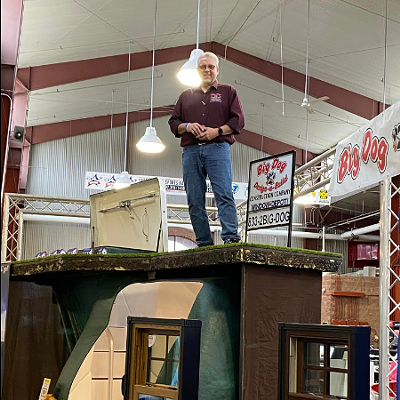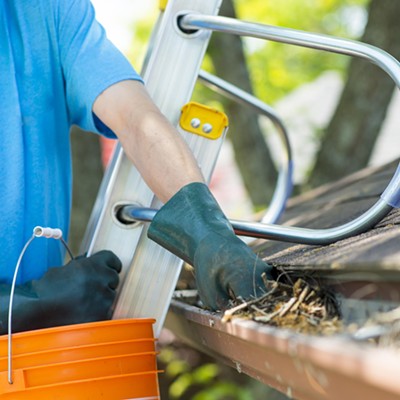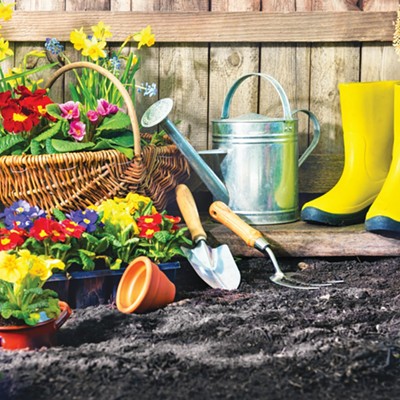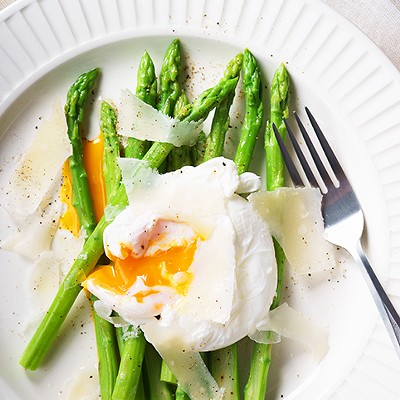
Thriller, filler and spiller
This tried-and-true formula is hard to beat, explained Becky Metzger, owner of Alive on 66, a plant boutique located in Springfield. "Start with the thriller, something tall that will serve as a focal point in the middle of the container. I'm really big on different textures and colors of leaves rather than just focusing on flowers. Plants like coleus, tropical cordyline and croton are fun and come in a huge range of colors that will look great from spring through fall."
Leafy plants also tend to be lower maintenance, Metzger pointed out, requiring less deadheading and watering than most flowering plants. For the filler, look for leaves with a variety of contrasting textures and shapes.
"I like to pair long, linear-type leaves with rounded leaves," she said. "If everything looks the same, it just becomes a cluster – that's where containers often go wrong."
To finish, add spillers for drama. "They don't need to go all the way around the pot, just placed in certain areas where they can cascade over the side," Metzger said.
Know your place
Andrea Crawford-Whitehead lives and works in Springfield and has been an avid container gardener since she was little. "I loved to help my mom plant the big half barrels that she had on either side of our deck," she said. "When my husband and I bought our first house, I knew I wanted to do window boxes."
Her first planters featured a striking mixture of lime green sweet potato vines and petunia. The design has evolved over years of trial and error.
"I've learned that you won't be as happy with your results if you just pick out plants you like," Crawford-Whitehead explained. "It helps to take into account the perennials that are growing in the ground around the window boxes and things like the paint colors on the siding and trim, so there's some continuity in the color palette."
It's also important to evaluate your area and what kind of maintenance you're prepared to deal with. How much wind and sun does that area get? How much time are you willing to commit to maintaining your planters? Are you OK with regularly deadheading (removing spent flowers) and watering?
In general, flowers – especially annuals – require more regular maintenance to continue reblooming and looking their best. "I really prefer tropical-type flowers like hibiscus and mandevilla, because they don't require as much water and deadheading as annuals do," Metzger pointed out.
Sun or shade?
"The biggest mistake I've made is buying something that looks really pretty in the store and ignoring the directions on the tag regarding how much sun it needs," divulged Crawford. "I finally accepted the fact that I live in a historic neighborhood with big trees and that only shade-loving plants are going to look full and lush all season."
Intense sun, especially in the afternoon, can be challenging to manage as well. "For sun-loving container gardening, cordyline is one of my favorites as well as snake plants, mandevilla and hibiscus," said Metzger. "I also really love using grasses, such as Shenandoah switchgrass. They can survive in your planter over winter and will evolve as the season grows – they'll start out green in the spring and then eventually turn red and produce lovely big plumes, so they make a nice transition into fall."
Sun-loving edibles can also thrive in pots, such as peppers, bush cucumbers and eggplant, which look especially nice in combination with complementary herbs and flowers such as petite marigolds, basil and chives.
"For containers in the shade and partial shade, tropical house plants do fabulously well outside," Metzger pointed out. Things such as begonias and caladiums mixed in a planter look stunning, and then they can come back inside for the winter. While fruiting edibles like tomatoes and berries require full sun, there are a variety of leafy greens and herbs that will thrive in partial sun including brightly hued swiss chard, lettuces and mint, as well as edible flowers, nasturtiums and chive blossoms.
Maintain
Fertilizer is important for healthy plants. In the summer, Metzger recommends using a high-phosphorus fertilizer every two weeks to help maximize bloom growth. Light summer pruning is also key to growing healthy, full plants. "I trim and shape the plants the way I want throughout the summer. If a coleus, for example, is getting really big and lanky you can just trim it back to the size you want," said Metzger.
Have fun with it
"Don't be afraid to throw something artificial in there as a filler," advised Crawford. "Not flowers, necessarily, but things like branches or artificial gourds can look really nice, especially toward the end of the season when some of the plants might not look super great. They don't get moldy or nasty, and you can use them year after year."























